✨You Can Touch the Times Square New Year's Eve Ball!
Find out how you can take home a piece of the old New Year's Eve ball!


New York City is known for its diverse foods from around the world, but there are actually a number of well known dishes that were invented in the city itself. The origins of these culinary offerings date back as far as the 1900s, and many are still widely consumed today. Here are 12 of the most surprising foods invented in New York City:

America’s favorite cookie was first invented by Nabisco (The National Biscuit Company) in New York City’s Chelsea Market. It was in 1912 that the comapny, looking to create a cookie similar to the Hydrox creme-filled sandwich cookie manufactured by Leaf Brands, invented the Oreo. Originally called the Oreo Biscuit, the sweet treat was first sold to a grocer in Hoboken, New Jersey on March 6, 1912, and trademarked a week later.
The cookie’s face design, introduced in 1924 to replace a more simplistic design, has remained the same ever since. It’s believed that the Oreo was developed as America’s attempt to break into the biscuit business more or less dominated by British companies. In fact, the popular English practice of dipping biscuits in tea is thought to be the main reason for the aggressive campaign for Oreo cookies to be dipped in milk. The beloved treat is now over a century years old, and remains as popular as it was upon its discovery.

This classic breakfast and brunch favorite is often regarded as the perfect hangover cure. Ironically, the dish was created for just that purpose: to relieve the aftereffects of a retired stock broker’s wild night out. In 1894, Lemuel Benedict visited the Waldorf Astoria Hotel in search for a cure for his morning hangover. He ordered a combination of poached eggs and bacon on a piece of toast, topped with a layer of hollandaise sauce.
The Maitre d’hotel was so impressed with this order that he immediately added it to the menu, substituting the bacon for ham and the toast for an English muffin. He named the dish after the inventor himself, giving birth to the Eggs Benedict.
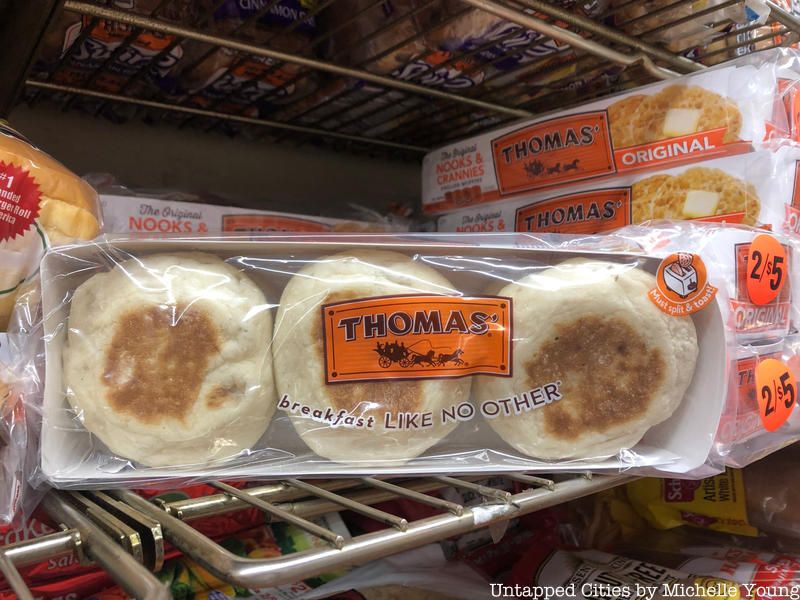
Not only was the Eggs Benedict invented in New York, but the essential ingredient that holds the dish together was also invented in the city: English muffins. In 1874, an Englishman named Samuel Thomas moved from Plymouth, England, to New York City. He soon opened a bakery, inventing a thinner, smaller version of English crumpets. The bread was also pre-cut down the center and had to be pulled apart, which allowed for a rougher toasting surface than slicing would have permitted.
He first called the snack toaster-crumpets, selling them to local grocery stores and hotels. They quickly grew in popularity and today, English muffins are an integral ingredient in many classic dishes.

The Waldorf Astoria Hotel is responsible for the invention of more than one classic American dish: Red Velvet Cake also has its origins at this famous hotel, which started making the cake in the 1920’s. One fan of the dessert requested the recipe from the Waldorf and was charged around $300 for it.
Angry and unaware that she would have to pay for her request, the cake-lover exacted her revenge on the hotel by sharing the recipe with hundreds of people. The Waldorf, as a result, lost its exclusive Red Velvet Cake recipe.
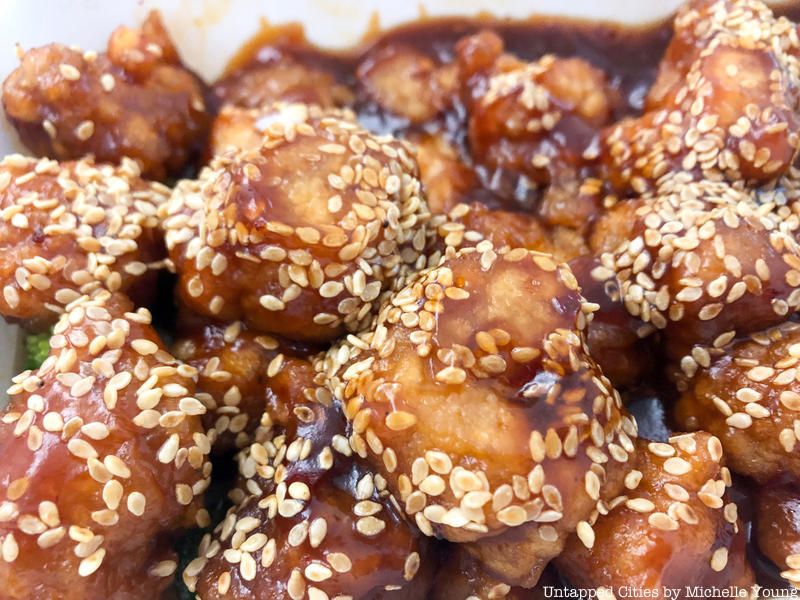
Although this dish can be found at nearly any Chinese restaurant in the United States, General Tso’s Chicken is actually not of Chinese origin. The dish was first invented by a Hunanese man named Peng Chang-kuei, who created it after moving to Taiwan following the Chinese civil war. He named the dish after Zuo Zongtang, a military leader from the Hunan Province. The original flavor of the chicken was sour, hot, and extremely salty — nothing like the General Tso’s chicken we know today.
Peng later moved to New York City and opened a Chinese food restaurant on 44th Street, where he reinvented the dish’s flavor. He boosted the chicken with an abundance of sugar to appeal to American taste buds, turning it into an instant favorite.
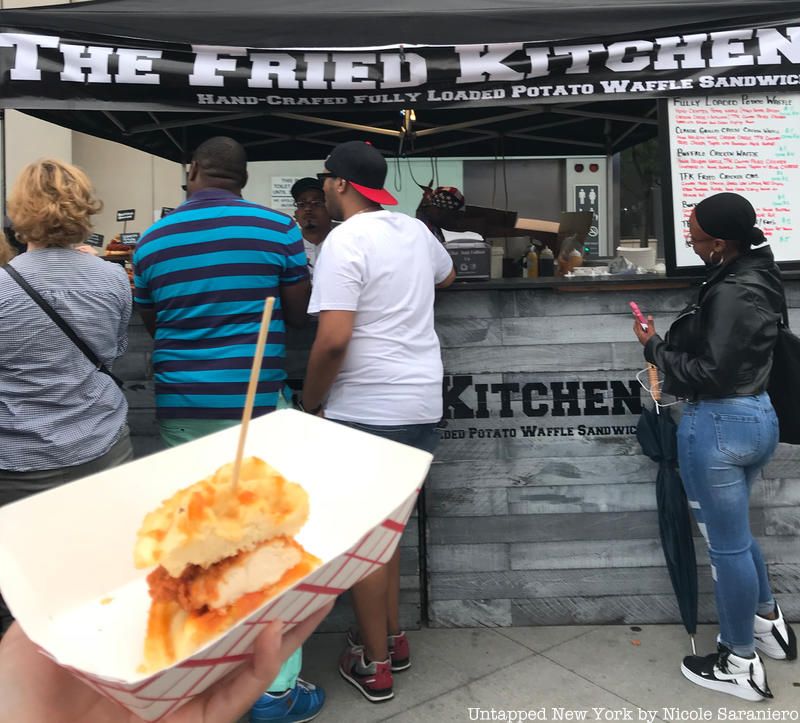
Although it’s widely regarded as soul food, Chicken & Waffles actually finds its origins up North: in Harlem, to be exact. This dish was first concocted by jazz musicians who frequented the 24-hour Wells Supper Club. The performers constantly played strange hours throughout the night, and by the time they were able to eat, they couldn’t decide if they were craving breakfast or dinner. As a compromise, they ordered Chicken & Waffles — satisfying both desires.
The dish later traveled down south, and is often thought of as a Southern delicacy. Even so, there are some New York joints that serve Chicken & Waffles during the early hours of the morning, like the dish was meant to be eaten.
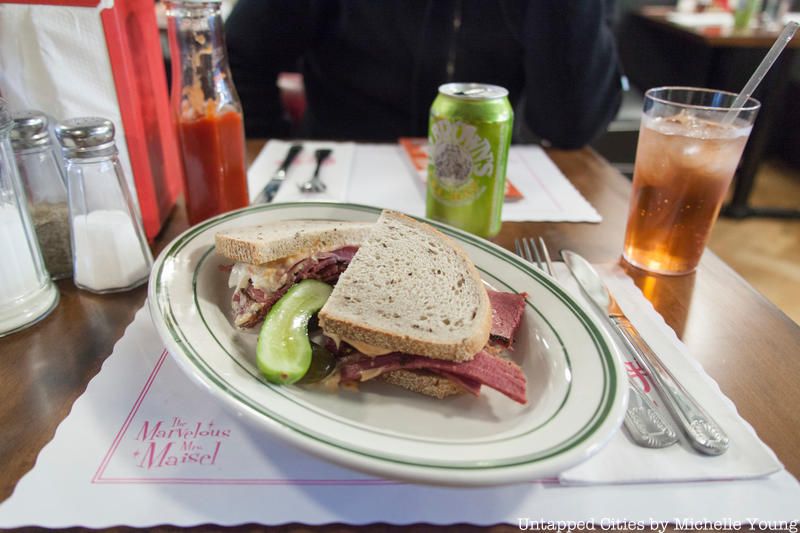
New York’s Pastrami sandwiches are served with a tower of hot Pastrami squished between two slices of Rye, accompanied by Russian dressing and a slab of coleslaw. In 1887, this sandwich came to town thanks to a Lithuanian kosher butcher named Sussman Volk. Volk retrieved the recipe for this classic sandwich from a Romanian friend, who traded it to him in exchange for storage space. Soon enough, Volk began selling the sandwiches out of the butcher shop where he worked.
The sandwiches eventually became so popular that the shop was soon revamped into an actual restaurant, serving the Pastrami sandwich as one of its prime meals.
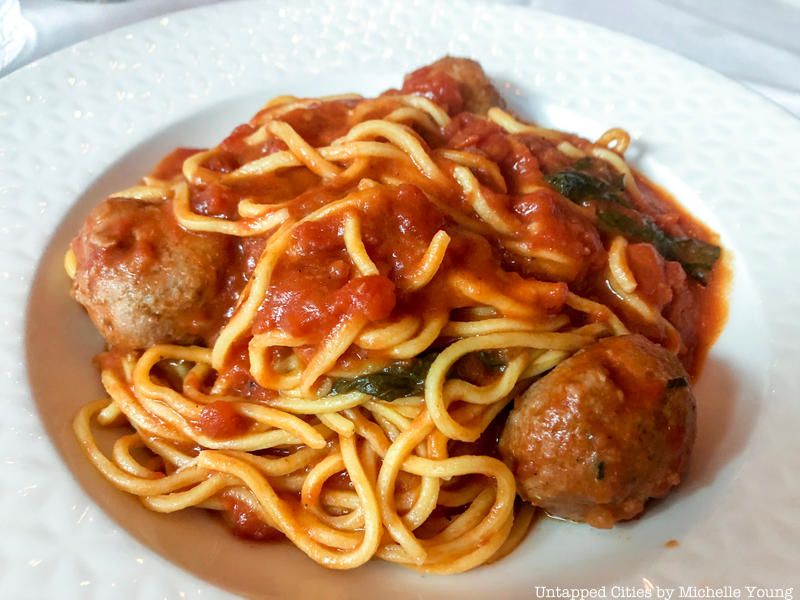
Traveling to Italy anytime soon? Don’t expect to find Spaghetti & Meatballs listed on the menu of any authentic Italian restaurant. In fact, if you did order meatballs in Italy, they would be served to you without the addition of pasta, and could be made of anything from beef to turkey to fish. That’s because, contrary to popular belief, this “Italian dish” was not actually invented in Italy, but in our very own New York City.
Italian immigrants were the original creators of this classic dish. Because beef was more affordable in America, they began making larger meatballs, combining them with plates full of spaghetti and marinara sauce.
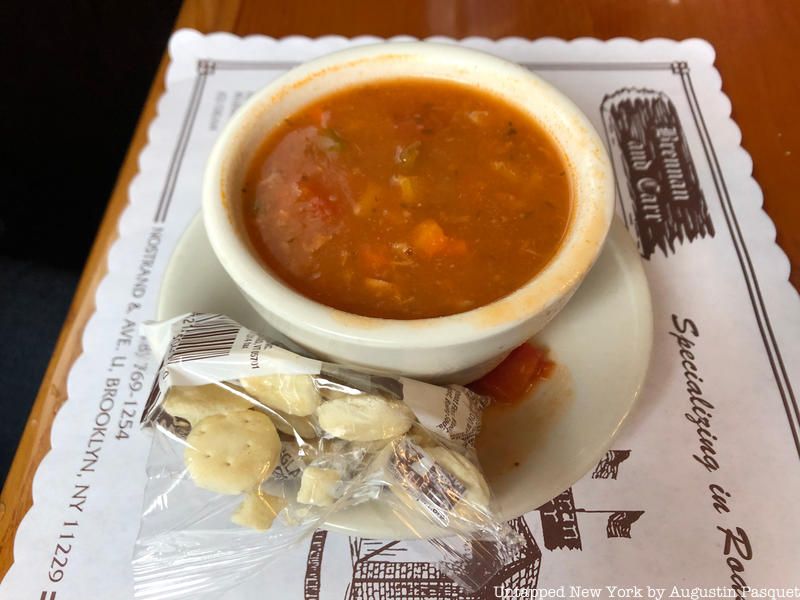
This one may not come as such a surprise. As evidence by its name, Manhattan Clam Chowder did actually originate in New York City. However, Portuguese immigrants in Rhode Island were purportedly the first to experiment with the use of tomatoes as the base of the dish (instead of milk).
The soup migrated to New York in the 1890s, where it was perfected, and first called “Fulton Fish Clam Chowder” or “New York Clam Chowder.” Residents of Maine began referring to the dish as “Manhattan Clam Chowder” around the 1930s.
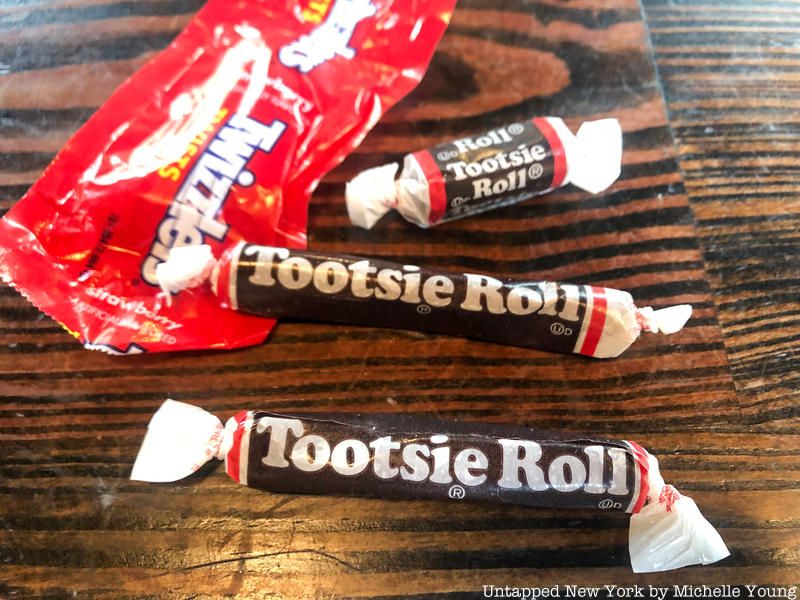
The very first Tootsie Roll was first created in 1884 by an Austrian immigrant named Leo Hirschfeld. Prior to his move, Hirschfeld worked as a candy maker in Austria, focusing on affordable hard candies rather than more expensive chocolate products. Once he and his family were settled, Hirschfeld opened a candy shop in Brooklyn.
The Tootsie Roll, however, was not originally a product of his candy shop. He first began making the delicious treat for his young daughter out of simple ingredients he had in his house: cocoa, butter, sugar, and milk. When she requested the sweet, Hirschfeld would reply, “Yes, my Tootsie, I will make you some candy.” He quickly realized the potential of his creation, and began selling it in his store. Hirschfeld wrapped each candy individually, writing “Tootsie Roll” on the outside of each wrapper.
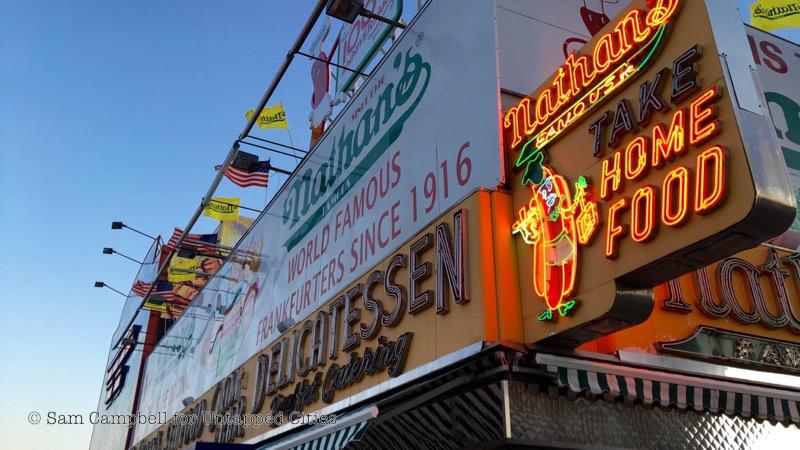
Although the first-ever version of the hot dog has its roots outside of the United States, American hot dogs — as we know them today — are a homage to New York City. In the 1870’s, a German immigrant named Charles Feltman began selling sausages on rolls on Coney Island. In 1916, this idea was later expanded on by Nathan Handwerker, founder of Nathan’s Famous Hot Dogs.
Nathan’s coined the idea of adding toppings to Frankfurters, specifically mustard, relish and sauerkraut. They quickly became popularized as a working-class street food, sold by food stands and carts. Because they were served at baseball games, hot dogs further became linked with American culture and society. Today, they are still regarded as one of the most beloved American food products.
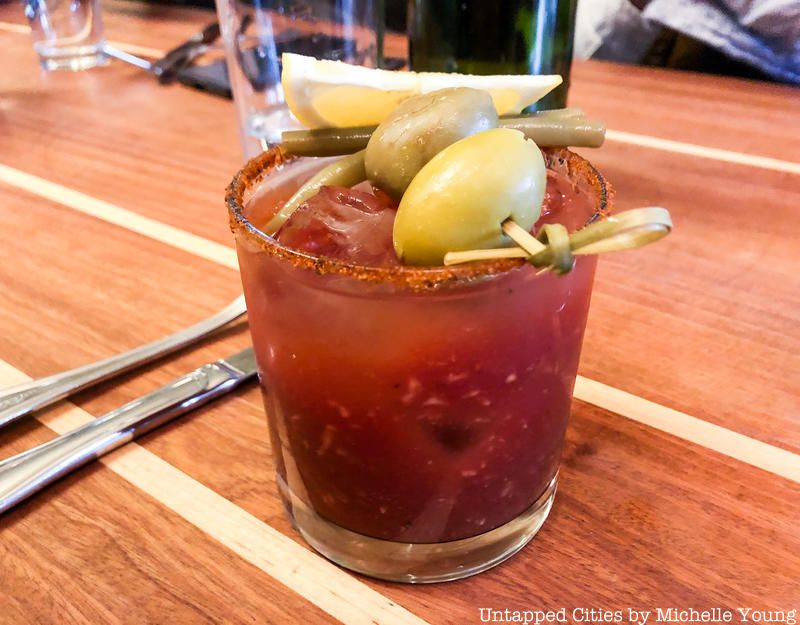
The Bloody Mary actually has two claims to fame — both attached to New York’s 21 club. The first story unfolds around Henry Zbikiewicz, a 1930’s bartender of the 21 club, who claimed to have mixed the first-ever tomato-juice vodka combination. The second story connects its invention with comedian George Jessel, who frequented the club and supposedly ordered the first Bloody Mary.
Either way, the drink did not transform into the Bloody Mary as we know it today until much later, when bartender Ferdinard Petiot refined the drink. He added cayenne pepper, salt, Worcestershire sauce, and lemon, to reform the Bloody Mary into a spicy, savory drink.
Next, check out The Mysterious Origins of the Black and White Cookie and NYC’s Notorious Bagel Famines
Subscribe to our newsletter